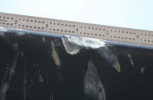plunk56b
New Member
I take pride in being able to hear choppers way in advance than seeing them. That buys me time to assess next steps.
And yes give right away…but my initial steps are to stop and hover or start to drop alt. Remember the drone can tuck away better than a large craft.
Additionally, if I have time, I will face the drone cam in the direction of the oncoming traffic to have an extra set of eyes of the copter’s trajectory. I’ve never been close enough to see a helicopter in my cam, but it does give me a last resort decision maker if things were to get uncomfortably close. Also, should I need to drop in an emergency, I will switch my camera to face down and gauge just how low I need to or can be.
Use all the tools available to you. Your eyes, ears, instruments, etc.
And yes give right away…but my initial steps are to stop and hover or start to drop alt. Remember the drone can tuck away better than a large craft.
Additionally, if I have time, I will face the drone cam in the direction of the oncoming traffic to have an extra set of eyes of the copter’s trajectory. I’ve never been close enough to see a helicopter in my cam, but it does give me a last resort decision maker if things were to get uncomfortably close. Also, should I need to drop in an emergency, I will switch my camera to face down and gauge just how low I need to or can be.
Use all the tools available to you. Your eyes, ears, instruments, etc.











